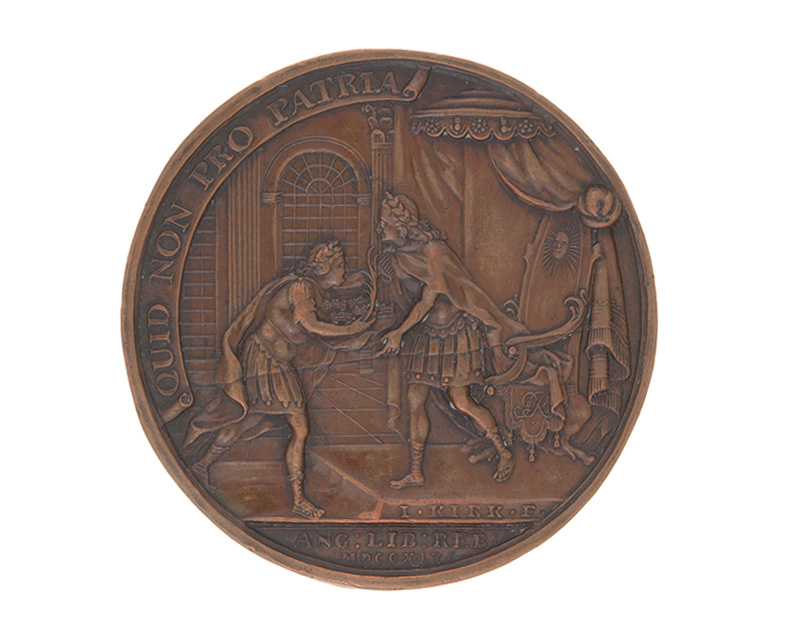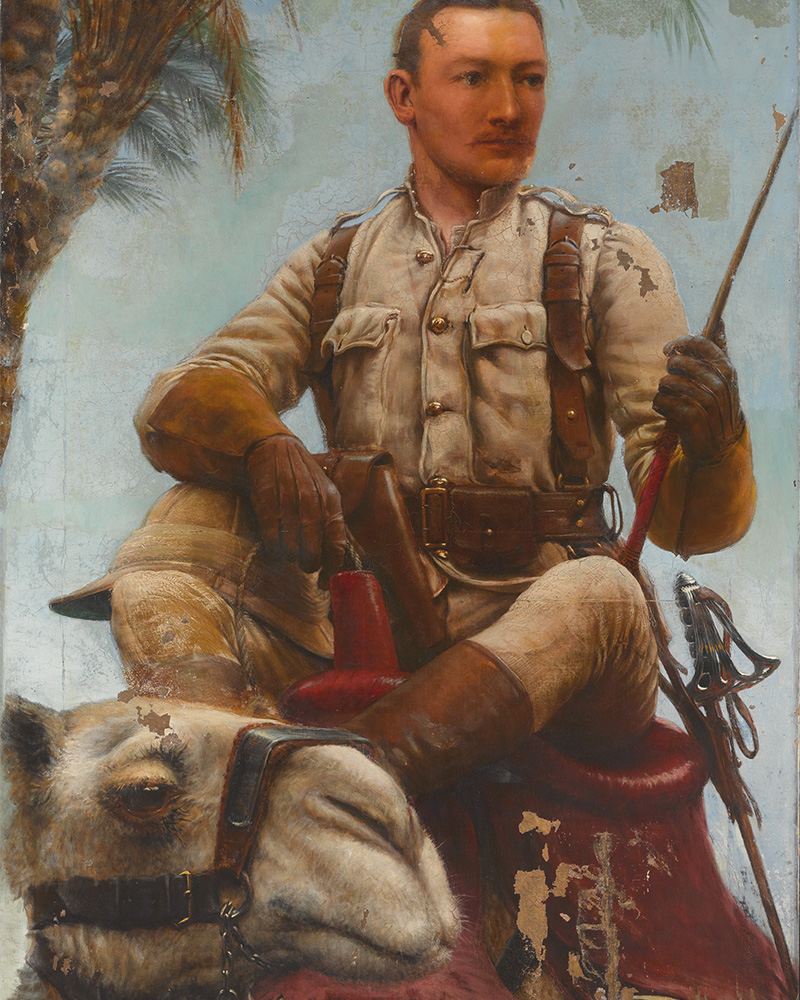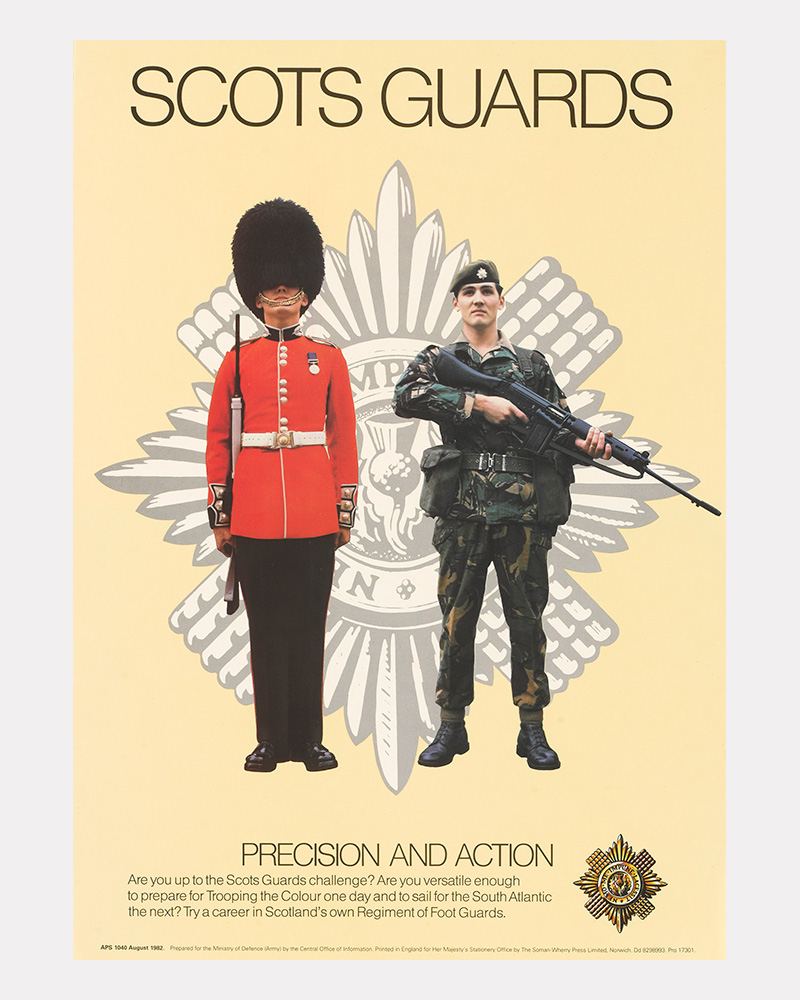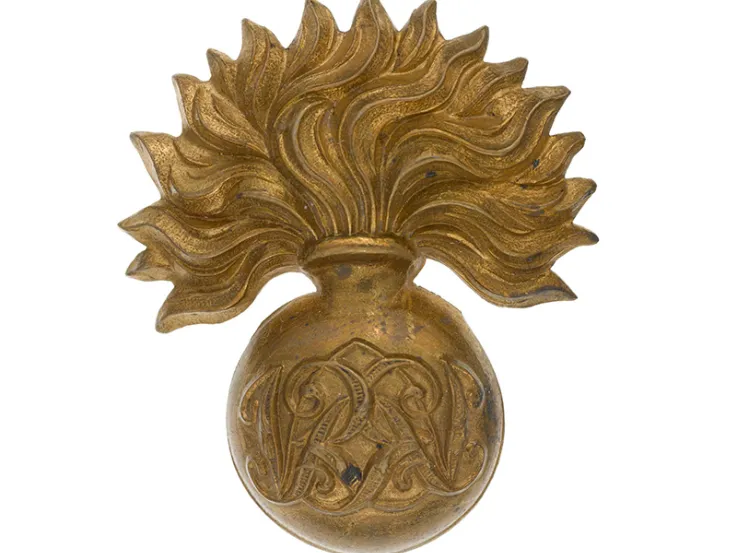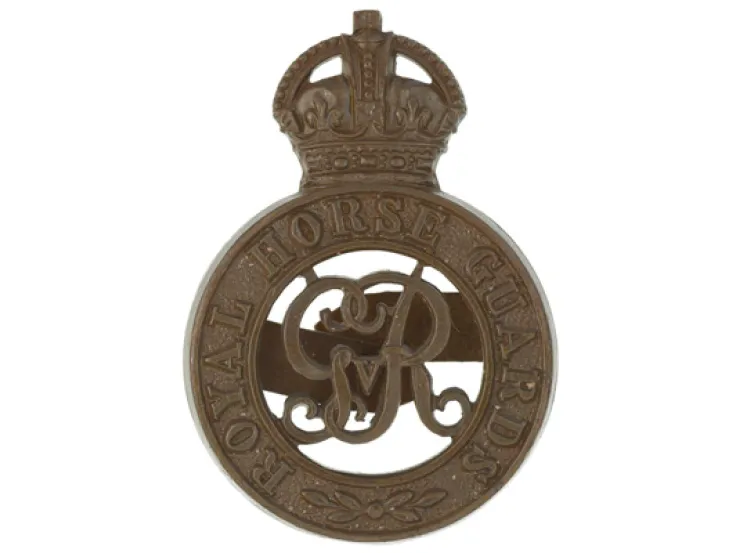Origins
The origins of this regiment date back to 1642, when King Charles I commissioned Archibald Campbell, the 1st Marquess of Argyll, to raise a unit in Scotland for service in the British Civil Wars (1642-51).
Following Charles’s execution, the regiment served as a personal guard to his exiled son, Charles II. It was disbanded after his failed attempt to reclaim the throne in 1651.
When the monarchy was restored in 1660, the newly crowned Charles II re-raised companies of soldiers in Scotland to serve as his personal troops. The regiment known today as the Scots Guards was formed in 1662 by merging these independent Scottish companies.
Early deployments
The regiment's first duties were to garrison the royal castles at Edinburgh, Dumbarton and Stirling. By the end of the decade, it was being used elsewhere in Scotland against dissident Presbyterian Covenanters.
In 1686, it was placed on the English establishment by the recently crowned James II. However, following the ‘Glorious Revolution’ of 1688, it went over to James’s rival, William of Orange, raising a 2nd Battalion to support his cause against the Jacobites.
During the Nine Years War (1689-97), the regiment was sent to Flanders, where it fought at Steenkerque (1692), Landen (1693) and Namur (1695).
Quiz
Which of these is a nickname of the Scots Guards?
When the Scots Guards first joined the English establishment in 1686, it became the Army's third regiment of foot guards. The first and second foot guard regiments - known today as the Grenadier Guards and the Coldstream Guards - gave it the nickname 'The Kiddies' to emphasise its junior status.
18th century
The regiment was kept in Scotland during the early years of the War of the Spanish Succession (1702-13), guarding against the ongoing Jacobite threat. In 1709, 1st Battalion was posted to Spain, where it served at both Saragossa and Brihuega the following year.
Around that time, 2nd Battalion was relocated from Edinburgh to London. A single company remained on duty in the Scottish Highlands until 1714. It would be another two centuries before any part of the regiment was again deployed to Scotland.
After that, the 3rd Regiment of Foot Guards - as it was now known - served at home, mostly in London. This included various public order duties, something which was much needed in an era before professional policing was introduced. Its next overseas campaign was the War of the Austrian Succession (1740-48), where it fought at Dettingen (1743), Fontenoy (1745) and Lauffeld (1747).
In 1745, both battalions briefly returned from the Continent to protect London during the Second Jacobite Rebellion. A detachment from 1st Battalion was also sent to pursue the rebel army to Carlisle on horseback.
The regiment’s service during the Seven Years War (1756-63) included home defence and amphibious raids on the Normandy coast. Later in the war, 2nd Battalion was part of the Guards Brigade that fought in Germany under the Marquess of Granby.
Revolutionary Wars
During the American War of Independence (1775-83), the regiment contributed 15 men from each company to a composite battalion drawn from all three regiments of foot guards. That unit fought at Long Island (1776), Brandywine Creek (1777) and Guilford Courthouse (1781), before being captured at Yorktown (1781).
The 1st Battalion was back in Flanders in 1793 during the French Revolutionary Wars (1793-1802). It was then sent on the Helder Expedition of 1799. The following year, it sailed to Egypt, taking part in the landing at Aboukir Bay and the Battle of Alexandria (1801).
Napoleonic Wars
In 1809, 1st Battalion deployed to the Peninsular War (1808-14). It served throughout the campaign, including at Talavera (1809), Bussaco (1810), Fuentes d’Onor (1811), Salamanca (1812), Vitoria (1813) and Bayonne (1814).
Meanwhile, 2nd Battalion was sent to the Netherlands in 1809 on the unsuccessful Walcheren Expedition. Soon after its return, a detachment helped to defend the Spanish naval base of Cadiz. It returned to the Netherlands in 1813, taking part in the Siege of Bergen-Op-Zoom the following year, and then staying on as garrison troops.
In June 1815, 2nd Battalion fought at the Battles of Quatre Bras and Waterloo, where its light companies were involved in the crucial defence of Hougoumont. It then formed part of the Army of Occupation in France.
In 1831, following the accession of King William IV, the regiment was renamed the Scots Fusilier Guards.
Victorian period
The regiment served in the Crimean War (1854-55) as part of the Guards Brigade, fighting at the Alma, Inkerman and Sevastopol. The Battle of the Alma (20 September 1854) was the first land action for which the Victoria Cross was awarded. Four of the six recipients were from the Scots Fusilier Guards.
In 1862, 2nd Battalion was sent to Canada to guard the frontier during the American Civil War. The following decade, in 1877, the regiment was renamed the Scots Guards.
In 1882, 1st Battalion served on the expedition to Egypt under Sir Garnet Wolseley. And men from both battalions were in action in Sudan between 1883 and 1885, including as part of a Guards detachment of the Camel Corps.
Early 20th century
Both battalions served in the Boer War (1899-1902). The 1st Battalion formed part of the Kimberley relief expedition in 1899, gaining a battle honour for the Modder River. The regiment also raised a 3rd Battalion in 1889, but this only lasted until 1906.
In 1911, marksmen from 1st Battalion were involved in the Siege of Sidney Street, an armed stand-off following a botched robbery attempt by Latvian revolutionaries. Although the regiment had a long history of aiding the civil authorities, this was the first time in the 20th century that the police had requested military assistance in London.
First World War
On the outbreak of the First World War (1914-18), both battalions deployed to the Western Front. They remained there throughout the conflict, serving as part of the Guards Division from its formation in August 1915. Between them, they gained 33 battle honours. Nearly 3,000 soldiers from the regiment were killed.
The 3rd Battalion was re-formed for the duration of the war and served in London.
Inter-war years
Immediately after the war, the 1st Scots Guards joined the British Army of Occupation in Cologne and returned home in 1919.
In 1927, 2nd Battalion set sail for China, spending the next two years in Shanghai and Hong Kong. Conflict between Italy and Abyssinia (now Ethiopia) resulted in 1st Battalion being posted to Egypt in 1935-36, while 2nd Battalion deployed to Palestine briefly in 1936 to deal with the Arab revolt.
Second World War
By the outbreak of the Second World War (1939-45), 2nd Battalion had moved to Egypt. It served in North Africa from the Western Desert to Tunisia, before moving to Italy, and then ending up in North West Europe.
1st Battalion was deployed to Norway in 1939, before also serving in North Africa and Italy. A 3rd and 4th Battalion were also raised during the war. Altogether, the regiment gained 41 battle honours. Over 1,000 Scots Guardsmen were killed in action.
Post-war deployments
At the end of the war, 2nd Battalion remained in Germany as part of the occupation force. During this time, it formed the British Guard of Honour at the Potsdam Peace Conference. Meanwhile, 1st Battalion moved to Trieste, where it remained for two years.
Over the next decades, the regiment deployed overseas on active service in Malaya (1948-51), the Suez Canal Zone (1951-52), Kenya (1962) and Borneo (1965-66), as well as regularly serving in West Germany as part of the British Army of the Rhine.
In 1971, 2nd Battalion was reduced to a single company and attached to 1st Battalion. However, it was restored to full-battalion status almost immediately owing to the growing troubles in Northern Ireland. Both battalions were subsequently deployed on a series of tours there. The Scots Guards last deployment to Northern Ireland came in 2001.
In 1981, 1st Battalion garrisoned Hong Kong. The following year, 2nd Battalion was part of the Falkland Islands relief force, seeing action at the Battle of Mount Tumbledown near the end of the conflict there.
Recent years
In 1993, 2nd Battalion was turned into the ceremonial ‘F’ Company, which continues to guard royal residences such as Windsor Castle and Buckingham Palace. In 2022 it took part in the State Funeral of Queen Elizabeth II.
Meanwhile, 1st Battalion remained active as an armoured infantry unit. It deployed to Iraq during Operation Telic in 2004-05 and 2007-08, and to Afghanistan in 2007 and 2012-13.
Regimental museums
The National Army Museum works with a network of Regimental and Corps Museums across the UK to help preserve and share the history and traditions of the Army and its soldiers.
Discover more about The Scots Guards by visiting The Guards Museum in London.





